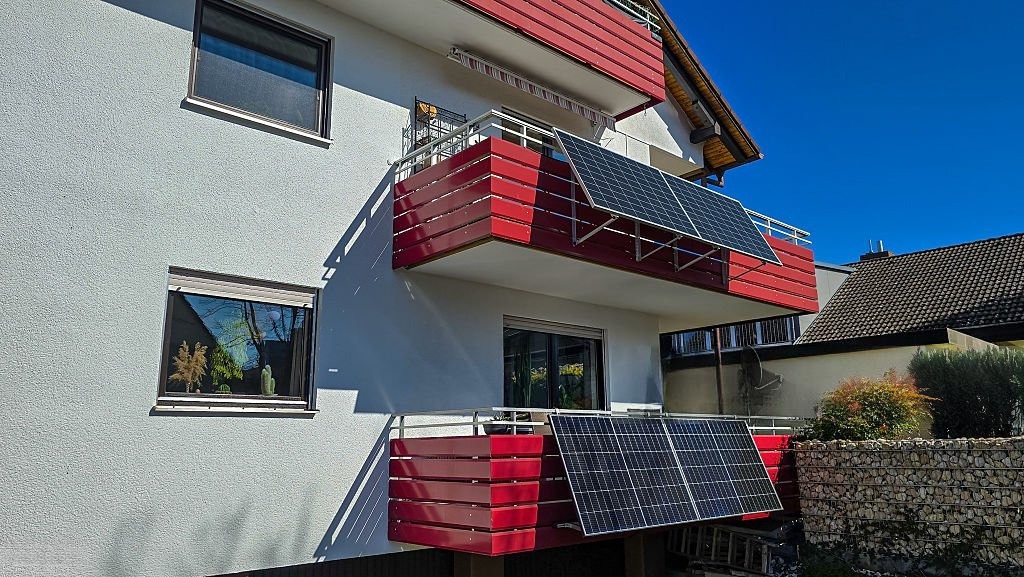As the demand for renewable energy grows, many households are turning to balcony photovoltaic (PV) systems as a simple, cost-effective solution. Compact, plug-and-play, and suitable even for renters, balcony PV systems make solar energy accessible to anyone with a balcony or terrace.
But how exactly do these systems work, and what components are required? Let’s break it down.
How Balcony PV Systems Work
The working principle of balcony PV is straightforward:
-
Solar Power Generation
-
Solar modules (panels) absorb sunlight and convert it into direct current (DC) electricity through the photovoltaic effect.
-
-
DC to AC Conversion
-
A micro-inverter converts DC into alternating current (AC), which is the standard electricity used in homes.
-
-
Power Integration
-
The converted AC electricity is fed into the home via a wall socket.
-
Appliances use the solar power directly, reducing the need for grid electricity.
-
If excess power is generated, it can flow back into the public grid (depending on local regulations).
-
Core Components of a Balcony PV System
-
Solar Panels (Modules)
-
Typically rated between 300W and 800W per panel.
-
Designed for outdoor conditions, with tempered glass and aluminum frames.
-
Installed on balcony railings, walls, or ground stands.
-
-
Micro-Inverter
-
Converts DC to AC and synchronizes with the home grid.
-
Provides safety features like automatic shutdown in case of grid failure.
-
Compact and efficient, often attached directly to the back of panels.
-
-
Mounting System
-
Brackets, hooks, or clamps secure the panels to balcony railings or walls.
-
Lightweight, adjustable, and designed to withstand wind loads.
-
-
PV Cables and Connectors
-
Special solar cables rated up to 1500V DC.
-
UV-resistant, weatherproof, and halogen-free for safe use outdoors.
-
Standardized MC4 connectors ensure easy plug-and-play installation.
-
-
Optional Monitoring Devices
-
Smart plugs or Wi-Fi-enabled apps allow users to track daily energy production.
-
Helps maximize efficiency and detect any system issues.
-
Safety and Reliability Features
-
Plug-and-Play Design → Easy for homeowners to install without major electrical work.
-
Certified Components → Balcony PV kits typically meet CE, TÜV, IEC, or UL safety standards.
-
Fire and Weather Resistance → Components designed for long-term outdoor operation.
-
Automatic Grid Protection → Micro-inverters shut down instantly during outages for safety.
Why Balcony PV Makes Sense
-
Cost Savings: Offsets electricity bills by using self-generated power.
-
Eco-Friendly: Reduces carbon footprint by lowering reliance on fossil fuels.
-
Accessibility: A renewable energy option for city residents, apartment dwellers, and renters.
-
Scalability: Systems can be expanded by adding more panels over time.
Conclusion
Balcony PV systems combine simplicity with efficiency. By using solar panels, a micro-inverter, a safe mounting system, and reliable PV cables, households can generate clean electricity right from their balconies.
With plug-and-play installation and internationally certified safety standards, balcony PV is not just an energy solution—it’s an empowerment tool for sustainable urban living.
Winpower Cable is a provider of connection solutions for the new energy system.
Our main products: Solar PV Cable, Energy Storage Cable, EV Charging Cable, Solar PV Cable Harness, Energy Storage Cable Harnesses, and Automotive Cable.
Winpower Cable has passed UL, TUV, VDE, CE, CSA,CQC Certification.
Our main markets: United States, Europe, Middle East, Southeast Asia. And we have 13 years of export experience.
Post time: Sep-23-2025

